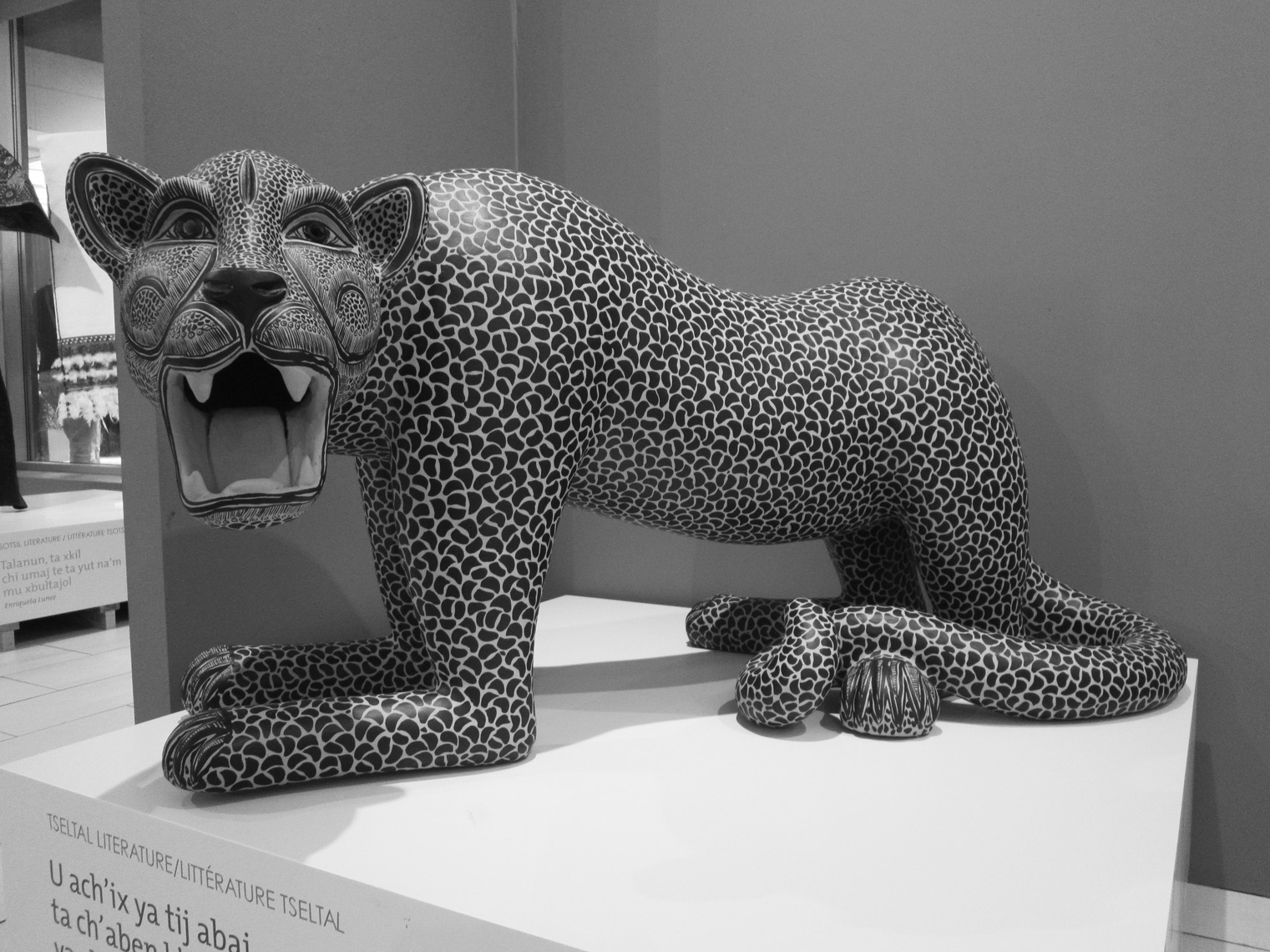This September, the aesthetic of mortality is on display in Montreal for Life and Death, Expressions of Daily Activities in the Worldview of the Contemporary Indigenous Peoples, an exhibit at the Espacio Mexico exploring the spaces between the funeral and the festive.
The intimate venue, showcasing roughly 40 arts and crafts pieces from 14 of the 68 surviving indigenous groups in Mexico, is the country’s first state-supported exhibition of indigenous art at an international location. The majority of the pieces were created by young artists who blend ancient techniques learned in their close communities with avant-garde approaches. By including works that represent traditional approaches and juxtaposing them with modern interpretations of indigenous art, the exhibit traces the cultural evolution of these communities while celebrating the survival of ancient techniques.
Phil Price, a member of the public relations department of the Mexican Contemporary Indigenous Art Museum (MAIC), explains that the exhibit aims to shape the contemporary portrayal of indigenous groups.
“[We seek …] a flip in the mentality with which indigenous groups are seen and more importantly how they see themselves,” Price said. “Indigenous groups are labelled in a rather general manner as ‘poor,’ referring specifically to an economic context. Widely ignored, however, is their incredibly rich culture, traditions, language and artistic knowledge.”
This richness of the groups’ culture and tradition is immediately apparent upon entering the exhibit. Organized geographically, the display guides viewers through the indigenous groups from the north, centre, and south of Mexico, showcasing arts and crafts in different media.
The central theme surrounding this panoply is the close relationship between life and death. From the northern desert areas of the nation, the exhibit explores pottery made with different types of clay and dyed with pastes consisting of crushed insects. String and percussion musical instruments, as well as traditional decorations used in ritual dances are also present.
The portrayal of indigenous groups belonging to Central Mexico is remarkably varied, forming an amalgam of the native and the European. Some of the more memorable displays included colourfully painted celebrations of nature and agriculture, mixing Christian imagery with indigenous Nahua symbols and mud skulls clad in nun attire, inspired by the national “Day of the Dead” celebration.
In the South, rainforest imagery permeates the artwork. These include an imposing carving of a jaguar, peyote-inspired art employing beads representing a creation myth, and traditional textiles.
Additionally, the exhibit showcases music samples from each region and traditional poetry, displayed in the original languages as well as in English and French.
Ulimately, the exhibition succeeds at showcasing the breadth and diversity of Mexican indigenous traditions. The striking differences in texture, media, and imagery vary starkly—from the austere neutral colours and rustic wooden shapes of the north, to the eclectic and intricate bead designs of the south. Although the display depicts Mexico as a nation with remarkably vivid indigenous culture, the lack of focus hinders the overall effect of the exhibit. The various media employed make it much more difficult to connect to the character of each indigenous group. This leaves the exhibit toeing the treacherous line of tokenizing each indigenous group by reducing them to a single salient characteristic. A narrowing of scope would lead to a more true appreciation of the complexities characterizing each community.
Despite the loose connection between some of the selections, this artistic sampler accomplishes its aim of highlighting the resilience of indigenous culture in Mexico. While the display takes into account how different groups’ techniques often adapted to include European motifs and approaches, it also celebrates the survival of indigenous culture and traditional art forms despite centuries of colonization.
“[Our proposition is for] this expansive ancestral wisdom to be something not just consigned to history books,” Price said. “Instead, from this living and breathing diversity, contemporary society can learn as we ponder our own existence and look towards constructing a sustainable future for human beings and the planet.”
—Life and Death, Expressions of Daily Activities in the Worldview of the Contemporary Indigenous Peoples, brought by the Mexican Contemporary Indigenous Art Museum (MAIC) and organized by the NGO Espacios de Arte Nomada (EAN), is on display until Sept. 14 at Espacio Mexico (2055 Peel St.) Admission is free of charge.








